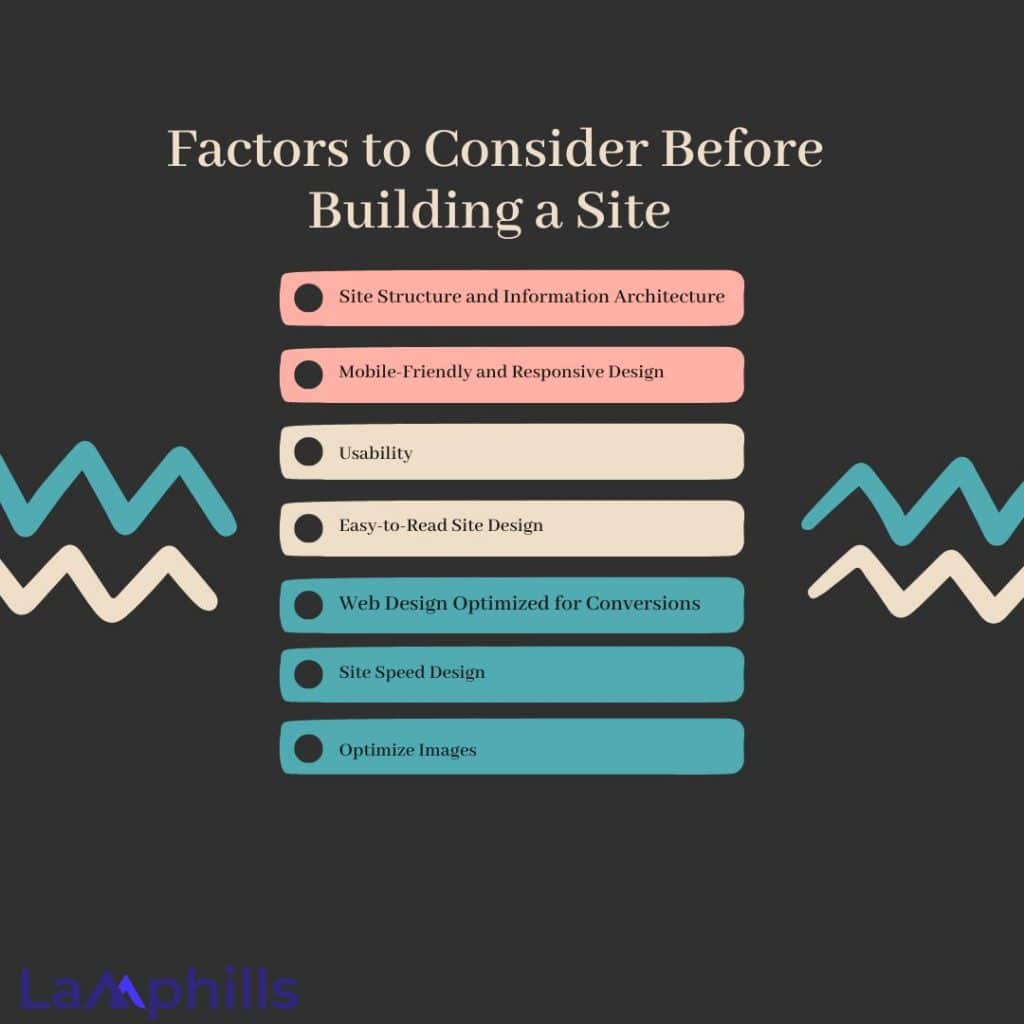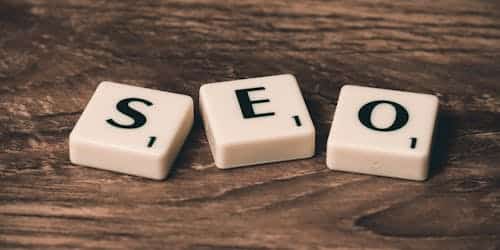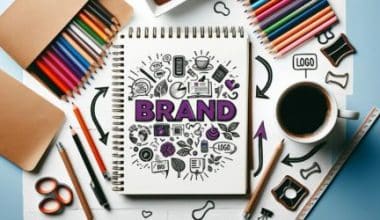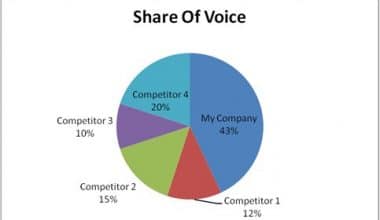In today’s fast-paced online world, the internet is buzzing with activity, and standing out can be tough. Your competitors are stepping up their game, and if you don’t catch your audience’s eye, you risk being overlooked. That’s where web design and SEO services come in, helping your website break through the clutter and become the clear choice for potential customers.
If you want your business to land on the first page of search results, understanding how SEO services and web design work together is crucial. When your site is optimized for both, it ranks higher, attracts more visitors, and keeps them engaged longer. This combination drives traffic, leads, and, ultimately, more revenue for your business. Let’s dive into how web design and SEO services can help you create a website that performs as well as it looks.
Key Points
- By integrating SEO into your web design, your website ranks higher on search engines, attracting more visitors and increasing brand awareness.
- With over half of web traffic coming from mobile devices, responsive design ensures smooth browsing experiences across all devices, boosting user engagement.
- A user-friendly layout keeps visitors on your site longer, reduces bounce rates, and enhances SEO rankings.
- Optimized images and faster page load times help retain visitors while also improving search engine rankings and conversions.
What Exactly is SEO Web Design?
SEO web design is all about creating and structuring websites in a way that makes them easy for both users and search engines to understand. When a site is SEO-friendly, it’s built following the best practices that optimize its visibility on search engines like Google. This means paying attention to crucial elements such as:
- Ensuring the website is mobile-responsive
- Improving page load speed for a better user experience
- Creating clear and descriptive URLs that help search engines grasp the page content
By embracing web design and SEO services, you’re not only helping search engines effectively crawl and index your pages but also guiding your audience to find and smoothly navigate your website.
Why Should You Care About Web Design and SEO Services?
Integrating SEO into your web design is like laying a strong foundation for your business’s online presence. When SEO and design go hand-in-hand, they create a seamless experience where people can easily discover your site and enjoy a user-friendly journey while interacting with your brand.
This combination can have multiple positive outcomes, including:
- Amplifying brand awareness as more people discover your site in search results
- Driving more organic traffic to your site, which increases visibility
- Converting visitors into leads through an intuitive user experience
- Improving conversion rates as your visitors are guided naturally toward making a purchase or inquiry
In short, SEO web design is not just about technical optimization but about creating a platform that effortlessly grows your revenue. When done right, it provides a solid blueprint for long-term success.
Factors to Consider Before Building a Site

When you’re building a website that’s designed to rank well on search engines and provide a top-notch user experience, partnering with an SEO-friendly web design service is a smart move and choice. Below are several essential factors you should consider to ensure your site is set up for success.
#1. Site Structure and Information Architecture
A strong site structure is the backbone of SEO success. Think of it as your website’s blueprint—it determines how users navigate your pages and how search engines crawl your content. An intuitive, user-friendly layout doesn’t just enhance user experience (UX); it can significantly lower bounce rates, which is a key factor Google considers in its ranking algorithm. The simpler it is for visitors to find what they’re looking for, the longer they stay on your site, which can translate into better rankings and more conversions.
When you work with a web design company, they should focus on crafting a seamless information architecture. This means organizing your pages logically and ensuring internal links are well distributed. Not only does this help users find content easily, but it also allows search engines to crawl your site more effectively.
#2. Mobile-Friendly and Responsive Design
Mobile-friendliness isn’t just an option anymore—it’s a necessity. With over half of all global internet traffic now coming from mobile devices, your website must deliver an exceptional mobile experience. A good SEO web design company will use responsive design to ensure your site automatically adjusts to fit the screen size, whether it’s being viewed on a phone, tablet, or desktop. This guarantees that your users have a smooth experience no matter what device they’re using.
For instance, if you run an eCommerce website, you want customers to be able to browse products, view images, and make purchases easily from any device. By investing in mobile-friendly design, you’re not just catering to your visitors but also meeting Google’s mobile-first criteria, which can directly improve your SEO rankings.
#3. Usability
Poor usability is one of the quickest ways to turn users off and send them straight to a competitor’s site. Usability affects how easily users can navigate and interact with your website. If users can’t find what they’re looking for or if your design feels clunky, they’re likely to leave, causing your bounce rate to skyrocket—something you don’t want for SEO.
When choosing a web design service, look for one that emphasizes the importance of usability in their design process. Factors like clear navigation menus, logical page layout, and easily accessible contact forms are crucial for enhancing usability. A good design company will also prioritize clear, consistent calls to action (CTAs) to guide your visitors toward taking the desired actions, such as signing up for newsletters, purchasing products, or booking services.
#4. Easy-to-Read Site Design
Your site’s design has a profound effect on how users interact with your content. Poor design, such as blocks of text placed in awkward locations or unreadable font sizes, can drive users away. This not only impacts your site’s readability but also its SEO performance. If visitors are struggling to consume your content, they’re more likely to leave, which increases your bounce rate and sends negative signals to search engines.
Your web design agency should prioritize clean, well-structured layouts that make your content easy to digest. A good practice is to use proper headings, bullet points, and spacing to break up long paragraphs. Additionally, ensure that font sizes and colors are readable and aesthetically pleasing. The more accessible your content is, the more likely users will stay longer on your site and engage with your offerings.
#5. Web Design Optimized for Conversions
A website optimized for conversions doesn’t just attract visitors—it turns them into customers. When designing a site with conversion rate optimization (CRO) in mind, your web design company should focus on creating a smooth user journey that naturally leads visitors to take desired actions. Whether it’s making a purchase, booking an appointment, or signing up for a newsletter, your website’s layout should make this process intuitive and frictionless.
Incorporating strong CTAs, streamlined navigation, and a clear visual hierarchy can drastically improve your site’s conversion rate. A case study on an eCommerce website for example, showed a 30% year-over-year increase in conversion rates after focusing on optimizing the site’s structure and design for conversions.
#6. Site Speed Design
Nobody likes a slow website. Research shows that if a webpage takes longer than three seconds to load, 53% of users will abandon it. Slow loading speeds are not just bad for UX but can also seriously harm your SEO performance. Google takes page speed into account when ranking websites, so if your site is lagging, you’re likely losing out on both traffic and conversions.
A skilled web design company will take site speed seriously. This involves optimizing images, reducing the number of HTTP requests, and minimizing the use of complex design elements that could slow down loading times. Fast-loading pages will improve your user experience, lower your bounce rate, and increase the chances of ranking higher on search engine results pages.
#7. Optimize Images
Images are crucial to a website’s design and content, but they can also be a double-edged sword if not optimized correctly. Large image files can slow down your site’s load time, negatively affecting your SEO and UX. On the flip side, optimized images can improve your rankings and user engagement.
Your web design service should focus on compressing image files without sacrificing quality, using descriptive file names, and adding alt text for each image. This not only makes your site more accessible to users with visual impairments but also helps search engines understand what the images are about. Moreover, by using properly sized images, you’ll ensure faster load times and a more enjoyable browsing experience for your visitors.
What Do Web Designers Do?
Web designers create and build websites and web pages by combining any number of visual design elements, including text, photos, graphics, animations, and videos. A web designer could create a brand new website or simply make updates to the design and layout of existing pages.
Does Web Design Require Coding?
While web designers don’t need to be pros at coding, per Cristy Koebler, Operations Manager at Hireguide, “It’s helpful for designers to understand how to code, but I wouldn’t say they have to. If they can understand basic HTML and CSS, they know how to deliver a design that a developer can code up.
What Are the Three Types of Web Designers?
The Three Types of Web Developers:
- The front-end developer (aka front-end engineer, aka “Web developer/designer”).
- The back-end developer (aka the person no one really knows about)
- The Full-Stack Developer (aka the Superman / Superwoman)
What Does Optimized for Conversions Mean?
Conversion rate optimization, or CRO, is the process of increasing the percentage of users or website visitors who complete a specific action to increase the number of leads you generate.
Which Is Better, SEO or Web Development?
SEO and web development aren’t just equally important. Many aspects of web development can directly affect a site’s SEO. In fact, SEO is part of building and running successful websites, so it’s important that web developers keep this in mind as they work.
Can I Get a Job if I Learn SEO?
Yes, it’s possible to get a job in SEO without a formal degree. Many successful SEO professionals have developed their skills through self-study, online courses, and practical experience. Demonstrating your knowledge, passion, and results is more important than having a specific degree.
Conclusion
A well-executed SEO strategy combined with responsive, conversion-focused web design services ensures your site is both optimized for search engines and appealing to your audience. By working with a professional web design company, you can create a website that effectively communicates your brand and is easily discoverable online.
Following the right steps, like those outlined above, will drive increased traffic, generate more leads, and boost sales. Thrive Internet Marketing Agency is skilled in seamlessly integrating SEO and web design strategies, helping businesses grow and succeed online.
Related Articles
- Landing Pages vs. Websites: What’s Better for Your Business?
- 10 Best Ideas for New Website Announcements: Emails, Templates, and Tips
- Best Practices for Creating a Lead Generation Website for High ROI.
- How to Boost Your Business with Advanced Website Marketing Tactics.






